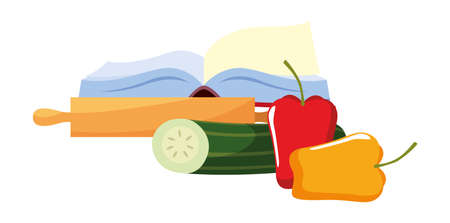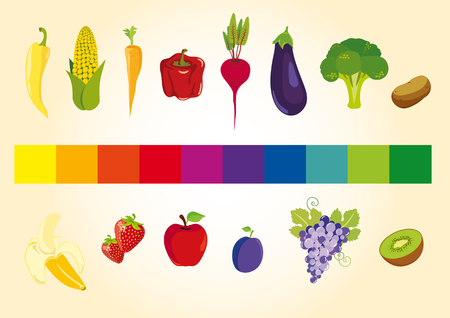1. Understanding July Heat Stress in the Garden
July marks the heart of summer across the United States, and with it comes soaring temperatures that can put a real strain on your garden. As the days grow longer and hotter, many plants face increased risk of heat stress—a common challenge for American gardeners. When temperatures consistently climb above 85°F (29°C), vegetables like lettuce, spinach, and peas may bolt or wilt, while fruiting crops such as tomatoes and peppers can suffer from blossom drop or sunscald. Recognizing early signs of heat stress is crucial: watch for drooping leaves during midday, yellowing foliage, or slowed growth. These symptoms often indicate that your plants are struggling to cope with excessive heat. To prevent damage, water deeply in the early morning to help roots access moisture before the hottest part of the day. Mulching around plants helps retain soil moisture and stabilize temperature fluctuations. In high-heat regions or during prolonged heatwaves, consider providing temporary shade using row covers or shade cloth—especially for tender crops. By staying vigilant and proactive, you can minimize stress and keep your garden productive through even the hottest weeks of July.
Watering Strategies for Hot Weather
July’s heat can be relentless, making smart watering essential to keep your garden thriving without wasting precious water. The key is to combine timing, technique, and the right tools. Early mornings are ideal for watering—this allows moisture to reach plant roots before the midday sun speeds up evaporation. Avoid evening watering when possible, as lingering dampness on leaves overnight can encourage fungal diseases.
Efficient Watering Techniques
Focus on deep, infrequent watering rather than shallow, daily sprinkles. Deep watering encourages roots to grow deeper, making plants more drought-resistant. Use a soaker hose or drip irrigation system to deliver water directly to the root zone with minimal loss from evaporation or runoff. Mulching around your plants with straw, wood chips, or grass clippings will also help retain soil moisture and keep roots cool.
Irrigation Schedule Recommendations
| Plant Type | Frequency | Best Time of Day |
|---|---|---|
| Vegetables (tomatoes, peppers) | 2-3 times per week | Early morning |
| Lawns | Once per week (deep soak) | Early morning |
| Fruit Trees | Once every 7-10 days | Dawn or dusk |
Tips for Conserving Water
– Check soil moisture before watering; only water when the top 1-2 inches are dry.
– Group plants with similar water needs together.
– Collect rainwater in barrels for use during dry spells.
– Adjust irrigation after rainfall or cooler spells to avoid overwatering.
By following these strategies, you’ll maintain a healthy garden through July’s hottest days while being mindful of both water conservation and plant health.

3. Mulching and Shade Solutions
July’s heat can be relentless, but smart gardeners know how to beat it with mulch and shade. Mulching is one of the most effective ways to lock in soil moisture, keep roots cool, and cut down on weeding chores. Spread a two-to-three-inch layer of organic mulch—like shredded leaves, straw, or bark chips—around your vegetables and flowers. This barrier helps prevent water evaporation after you irrigate and blocks weed seeds from getting the sunlight they need to sprout.
For crops that are especially sensitive to intense sun—think lettuce, spinach, or young seedlings—temporary shade structures are a real lifesaver. Use materials like shade cloth, old bed sheets, or even lightweight row covers draped over hoops or stakes. Aim for 30-50% shade coverage; too much can slow growth, but just enough will protect plants from scorching midday rays. These structures are easy to move as needed and help extend the harvest window for cool-weather crops that might otherwise bolt in July’s swelter.
By combining mulching and strategic shading, you’ll keep your garden thriving through summer’s peak. Not only do these methods conserve water and reduce labor, but they also give your plants the best shot at producing healthy, flavorful yields all season long.
4. Harvesting Early Summer Crops
Knowing when and how to harvest your early summer crops is key to getting the most out of your July garden. Picking at the right time ensures peak flavor, longer shelf life, and encourages more production through the season. Below is a practical guide for recognizing the ideal harvesting stage for some of America’s favorite summer veggies and fruits, along with hands-on tips for proper picking.
Recognizing Peak Picking Times
| Crop | Signs of Readiness | Notes |
|---|---|---|
| Tomatoes | Full color (red, yellow, or orange), slight give when gently squeezed | Pick in the morning for best flavor; don’t let overripen on vine |
| Zucchini/Summer Squash | 6–8 inches long, skin glossy and tender | Bigger squash get tough; frequent picking boosts yields |
| Cucumbers | Firm, uniform green color, 6–9 inches long depending on variety | Yellow tips mean overripe; pick every other day during peak season |
| Green Beans | Smooth, snap easily when bent, seeds barely visible inside pod | Avoid bulging pods; pick regularly to keep plants producing |
| Blueberries & Blackberries | Deep blue/black color, berries detach easily from stem with a gentle tug | Taste test before picking large quantities; avoid squeezing berries when harvesting |
| Peppers (Bell & Hot) | Glossy skin, full size for variety, firm to touch; can pick green or wait for color change | Use scissors or pruners to avoid damaging plant branches |
Proper Harvesting Techniques for High Yields
- Use Clean Tools: Always use sanitized shears or scissors for cutting vegetables like peppers or eggplants to prevent disease spread.
- Gentle Handling: Handle fruits and veggies carefully to avoid bruising—especially important for tomatoes and berries.
- Frequent Picking: Don’t let produce sit too long on the plant. Frequent harvesting encourages more blooms and new fruit set in crops like beans, zucchini, and cucumbers.
- Pest Watch: Check harvested produce for signs of pests or damage so you can respond quickly if problems arise.
- Harvest Early: When possible, harvest in the early morning while temperatures are cooler. Produce stays crisper and fresher this way.
Pro Tip from Experienced Gardeners:
If you’re unsure about ripeness—especially with something like melons or new varieties—pick one test fruit first. Taste it before committing to a bigger harvest. This “trial by taste” saves disappointment and helps fine-tune your picking schedule year after year.
5. Managing Pests and Diseases in July
As summer heat peaks in July, your garden can become a hotspot for pests and diseases that thrive in warm, humid conditions. Staying proactive is key to keeping your crops healthy and productive throughout this critical month.
Monitor Your Garden Regularly
Walk through your garden at least twice a week, checking the underside of leaves, stems, and fruit for signs of trouble. Common summer pests across the U.S.—like aphids, spider mites, cucumber beetles, squash bugs, and tomato hornworms—can multiply rapidly. Look for chewed leaves, sticky residue, webbing, or wilted plants as early indicators.
Summer-Specific Disease Watch
High humidity and frequent watering create ideal conditions for fungal issues such as powdery mildew, downy mildew, and blight. Keep an eye out for white patches on leaves, dark spots on stems or fruit, and any sudden yellowing or leaf drop. Early detection makes management much easier.
Integrated Pest Management (IPM) Strategies
Instead of reaching straight for chemical sprays, use integrated pest management tailored to your region’s challenges:
- Handpick larger pests: Early morning is the best time to catch squash bugs or hornworms by hand.
- Encourage beneficial insects: Ladybugs and lacewings feed on aphids; plant pollinator-friendly flowers like sunflowers or cosmos nearby to attract them.
- Use row covers: Lightweight fabric barriers can protect vulnerable crops from flying insects while still allowing air and moisture through.
- Rotate crops: Changing planting locations each year helps break pest and disease cycles common in American home gardens.
- Opt for organic solutions: Neem oil and insecticidal soaps are effective against soft-bodied insects and are safe for most edible plants when used as directed.
Know Your Regional Risks
Pest pressures vary by U.S. region—southern states may see more issues with whiteflies or stink bugs, while northern gardens might battle cabbage loopers or flea beetles. Reach out to your local county extension office for up-to-date advice specific to your area’s climate and pest trends.
Tip:
Avoid watering late in the day; wet foliage overnight encourages disease development. Water early so leaves dry quickly under the summer sun.
6. Preparing for Fall Planting
As July winds down, it’s time to start thinking about your autumn garden. Smart gardeners know that a bit of preparation now can lead to a bountiful fall harvest. Here’s how you can get your soil and crop choices lined up for successful succession planting as summer heat gives way to cooler days.
Assessing Soil Health After Summer Crops
Summer crops can take a toll on your garden beds. Before you plant anything new, check your soil’s texture and nutrient levels. Remove any spent plants and old roots, then loosen the soil with a garden fork or broadfork to encourage aeration. Add well-rotted compost or aged manure—this boosts organic matter and replaces nutrients used up by your early crops.
Testing and Amending Your Soil
If you haven’t done a soil test recently, now’s the time. Kits are widely available at local garden centers or extension offices. Pay attention to pH and nitrogen levels—fall crops like leafy greens prefer slightly acidic to neutral soils (pH 6.0-7.0). Mix in amendments like lime or blood meal as recommended by your test results for optimal growth.
Selecting Crops for Succession Planting
Late July is perfect for sowing seeds of fast-maturing vegetables that thrive in cooler weather. Think leafy greens (spinach, kale, lettuce), root veggies (radishes, turnips, beets), and brassicas (broccoli, cauliflower). Choose varieties labeled as “early” or “cold hardy”—these will handle the transition from hot days to chilly nights much better.
Timing Your Plantings
Consult your USDA hardiness zone and count back from your area’s average first frost date to determine when to plant each crop. For example, many fall greens need 40-60 days to mature, so late July into early August is prime time for sowing in most American regions.
Mulching and Moisture Management
After planting, add a layer of mulch around seedlings to retain moisture and suppress weeds—a must in hot summer conditions. Keep beds consistently moist but not waterlogged; this helps young plants establish strong roots before autumn arrives.
Looking Ahead
By giving your soil some TLC and choosing the right crops now, you’ll set yourself up for a productive fall harvest. Succession planting not only maximizes your growing space but also keeps your garden healthy and thriving through the changing seasons.


